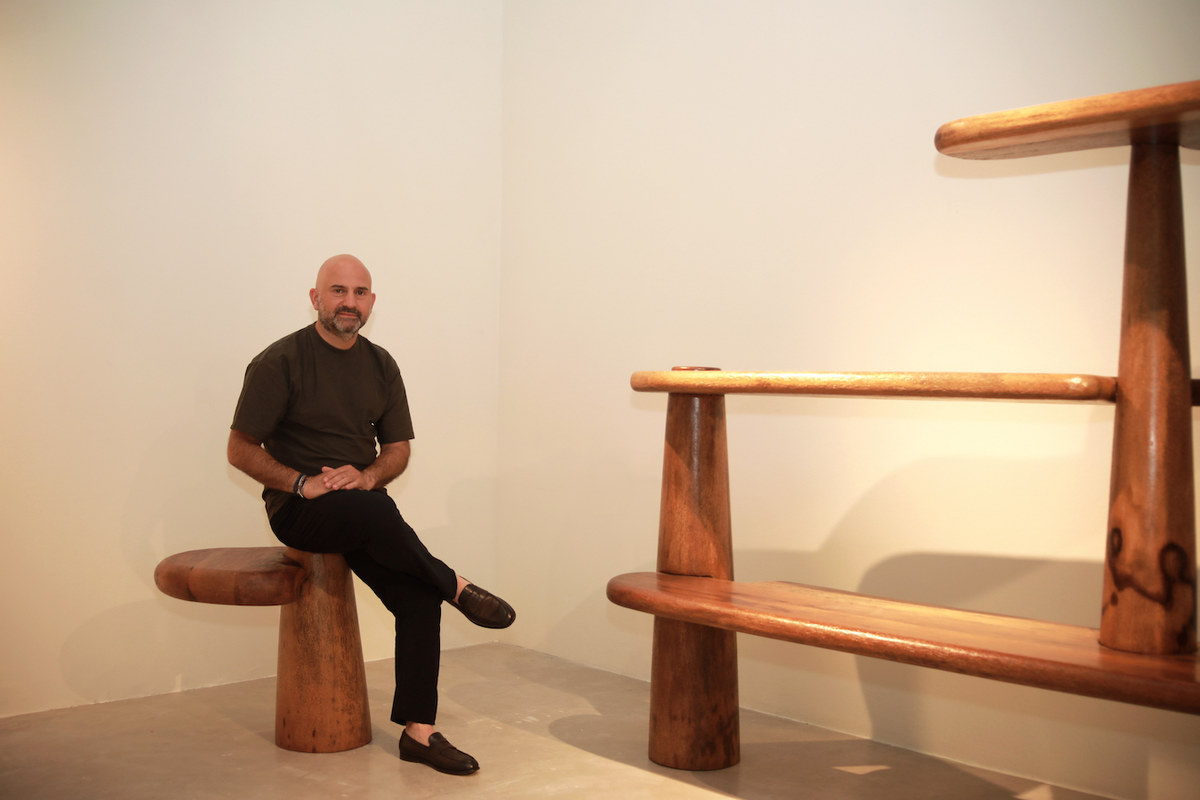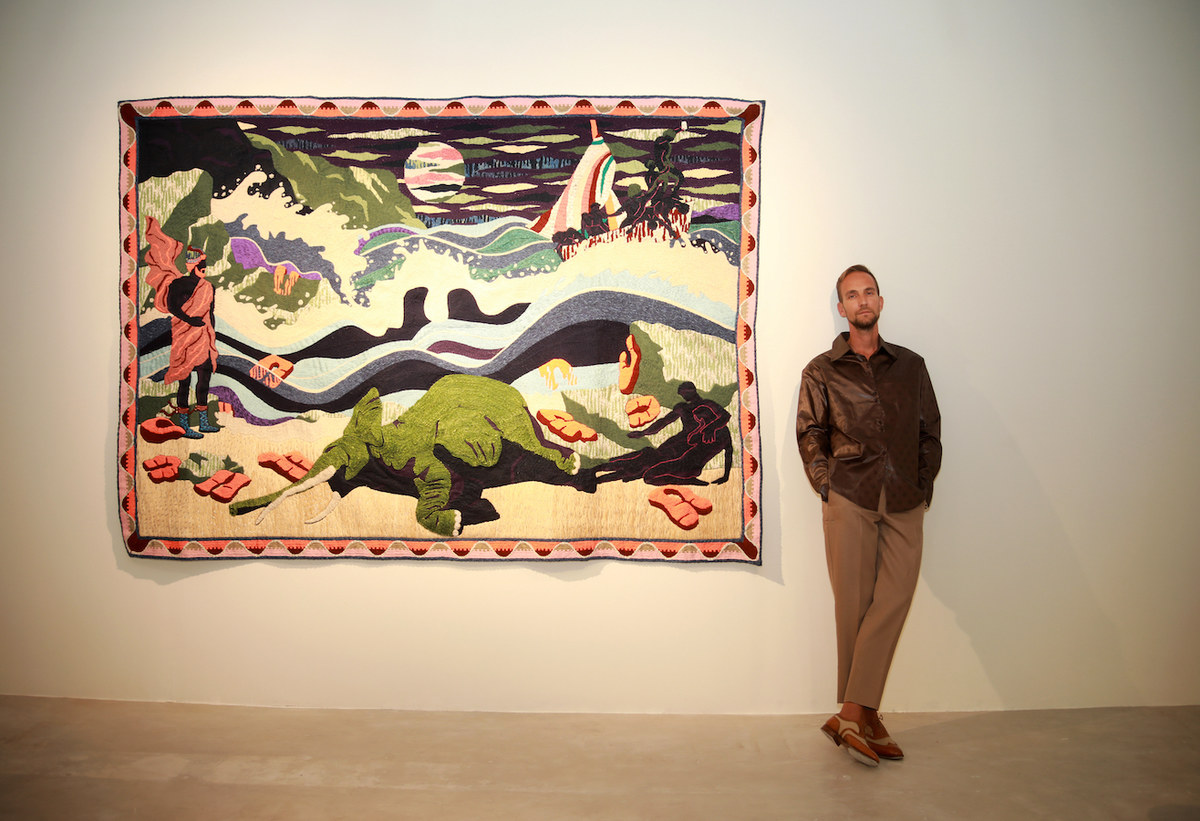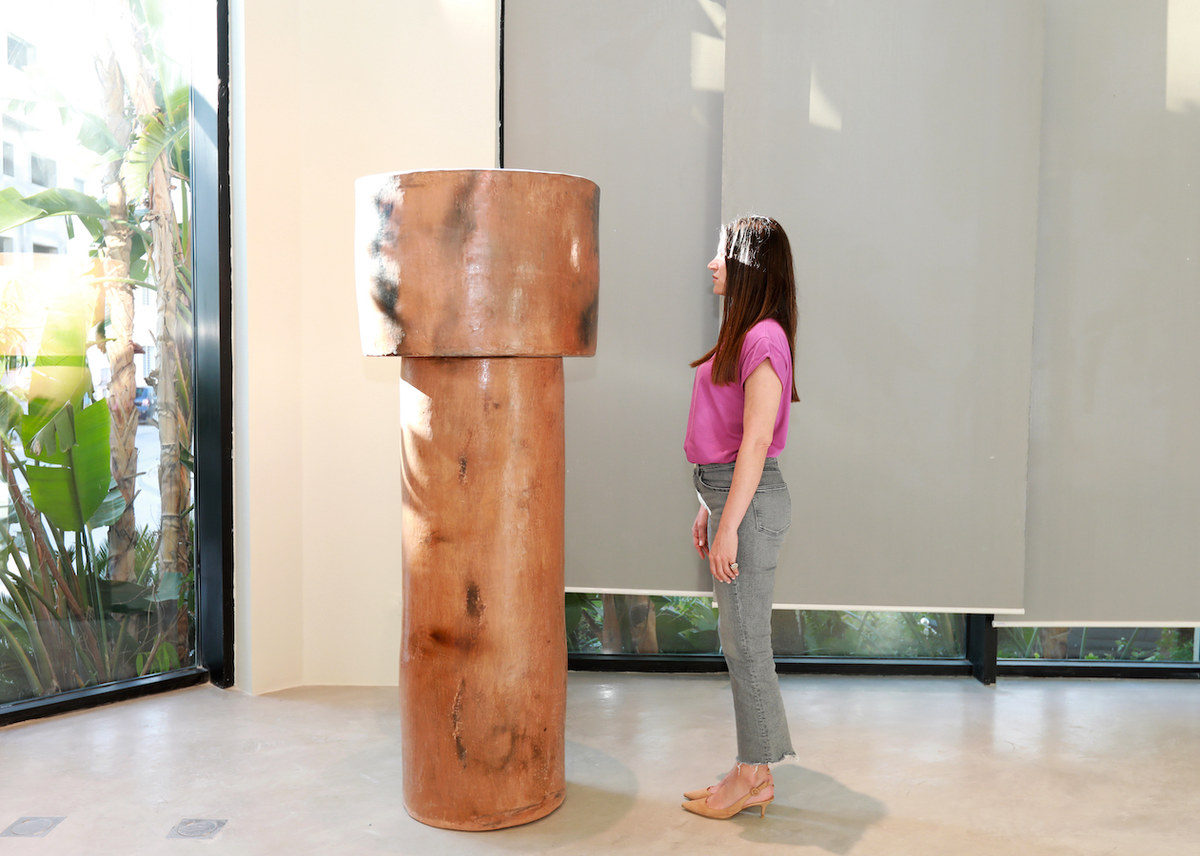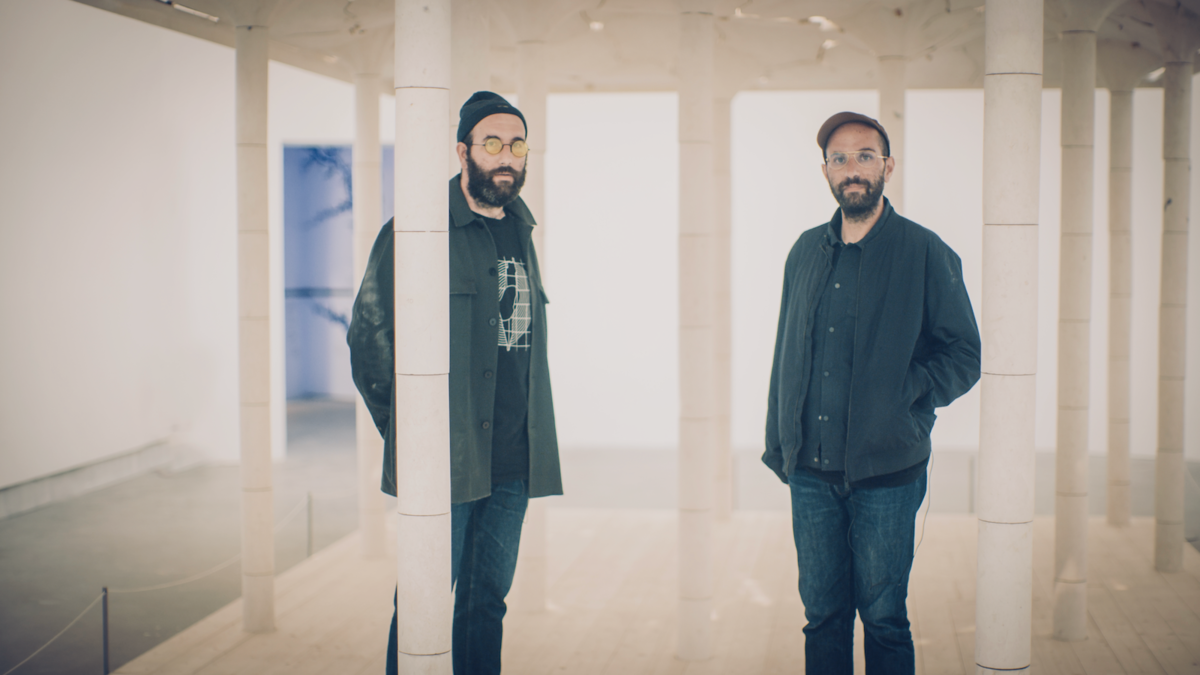Dubai: In the ruins of the great city of Carthage, founded by the Phoenicians in the 9th century BC, a number of modern designs have been delicately placed near the Tunisian capital, Tunis. The new finishes are a stark contrast to the ancient ruins.
Vibrantly colored wool kilims created by American Medellin designer Chris Woolston and Tunisian artisan Le Kef are elegantly arranged on the remains of ancient Roman columns.
There are also beautiful new palm-tree furniture sculptures by Studio Manda, the company of Lebanese designer Georges Mohasseb, and the curves of the sculptures by Tunisian artisan Kais Gharbya. These can be found nearby, nestled among ancient ruins and sculptures.

“Carthagisme” is curated by Milan-based curator Nicolas Bellvance-Lecompte for Lamia Bousnina Gallery. (provided)
These works are part of the inaugural show “Carthageism” curated by Milan-based curator Nicolas Belvance-Lecompte for the Lamia Busnina gallery.
Opened in late May in downtown Tunis, this space is dedicated to showcasing art and design with a focus on championing the country’s craftsmanship.
“In a country where traditional and Mediterranean cultural influences are constantly intertwined, this exhibition celebrates Tunisia’s artistic heritage while embracing the dynamism of contemporary creative expression,” Bellvance-Lecompte said in a curatorial statement.

Georges Mohaseb. (provided)
“We want to celebrate Tunisian heritage,” Ramia Bouznina Ben Ayed, creator of the eponymous space, told Arab News. “Design is becoming more important in Tunisia now. We want to champion design objects made in Tunisia. I always wanted to create bridges and connections with designers from all over the world.”
Running until September 29, the exhibition features specially commissioned works by six international designers.
They include Palestinian designers Elias and Youssef Anastas, French multidisciplinary designer Louis Barthélemy, Beirut-based Mary-Lynn Massoud and Georges Mohasseb, and American Woolston, who currently resides in Medellín, Colombia.

Produced by Carthagosme Lamia Busnina Gallery. (Courtesy)
The works were temporarily displayed in the ruins of Carthage to preview the exhibition, which will later be moved to the gallery, a sleek new space with high ceilings and white walls in the town centre.
To create each project, the designers collaborated with local Tunisian artisans.
Tunisia has long been home to a vibrant artisan community. According to data from Oxford Business Group, there are around 350,000 artisans in the country, most of whom are women, working in marginalized communities and contributing to the local economy.

Lamia Ben Ayed. (provided)
Created to celebrate Tunisian craftsmanship, these new pieces aim to create breathtaking contemporary design pieces in dialogue with local industries and boost the small-scale economy in Tunisia.
“The group exhibition is a statement celebrating Tunisian culture and reviving and reinterpreting traditional craft practices through a series of unique collaborative commissions,” says Bellvance-Lecompte.
Mohaseb collaborated with Gharbia to create furniture out of palm, a material notoriously difficult to work with due to its irregular fibers and tough texture.
“The whole process was very interesting,” says Mohaseb, who has worked with wood regularly but is new to palm trees.

Chris Woolston. (provided)
Mohaseb said Gharbia, in southwestern Tunisia, eight hours from Tunis, is home to the country's largest palm trees. “It was a challenge for all of us, but we did it.”
He added: “The sculptures are very simple in form, but difficult to make in terms of connection and assembly.[The artisans]were eager to learn and explore, and were open to the idea of doing something different from what they had been doing for a long time.”
The resulting works—a bookshelf, a long bench, a table and chairs—were created in what Mohaseb calls “an honest and humble way.”

Louis Barthelemy. (provided)
Palestinian brothers Elias and Youssef used computer modeling to create a series of stone tables with irregular and deformed shapes.
These works, made of irregularly shaped pieces connected without glue or cement, are an extension of the “Stone Matters” project, which explores the predominance of stone in Palestinian architecture. The resulting table, which can be seen in the gallery, was made by local Tunisian artisans MDO.
Massoud, a Lebanese designer based in Beirut, collaborated with Tunisian ceramicist Ali Kader to create a ceramic piece titled “Primitive Echoes” that honors and upholds the traditions of Tunisia’s Gafsa region.

Marilyn Massoud. (provided)
The goal was to create a range of rendered ceramic floor and table lamps and side tables that echo the colours and textures of Mohasseb’s palm tree carvings. Of note is the way her work incorporates references to Tunisian tribal pottery.
Woolston, on the other hand, created ten fascinating, colorful kilims featuring a variety of geometric patterns. To create each one, Woolston worked with ten weavers from the Le Kef region of northwestern Tunisia, who based their designs on drawings he created.

Nicolas Bellavance-Lecomte. (Courtesy)
Also made of various fabrics, “Hannon and the Mediterranean Mirage” is a tapestry created by French designer Louis Barthelemy in collaboration with Nejib Bel Haj in Tunisia, powerfully combining Tunisia’s ancient history with modern stories from the Mediterranean.
The vibrantly colored tapestries mix figurative and abstract depictions and include a portrait of the 6th-century BC Carthaginian explorer Hanon.

Youssef and Elias Anastas. (provided)
The painting depicts him traveling across the Mediterranean and the bright orange life jacket he is wearing, symbolizing the plight of North African migrants hoping to find a new life across the Mediterranean.
Like the works specially created around the theme of “Carthaginism,” these tapestries meaningfully integrate tradition, ancient history and the present within the context of Tunisian heritage.
